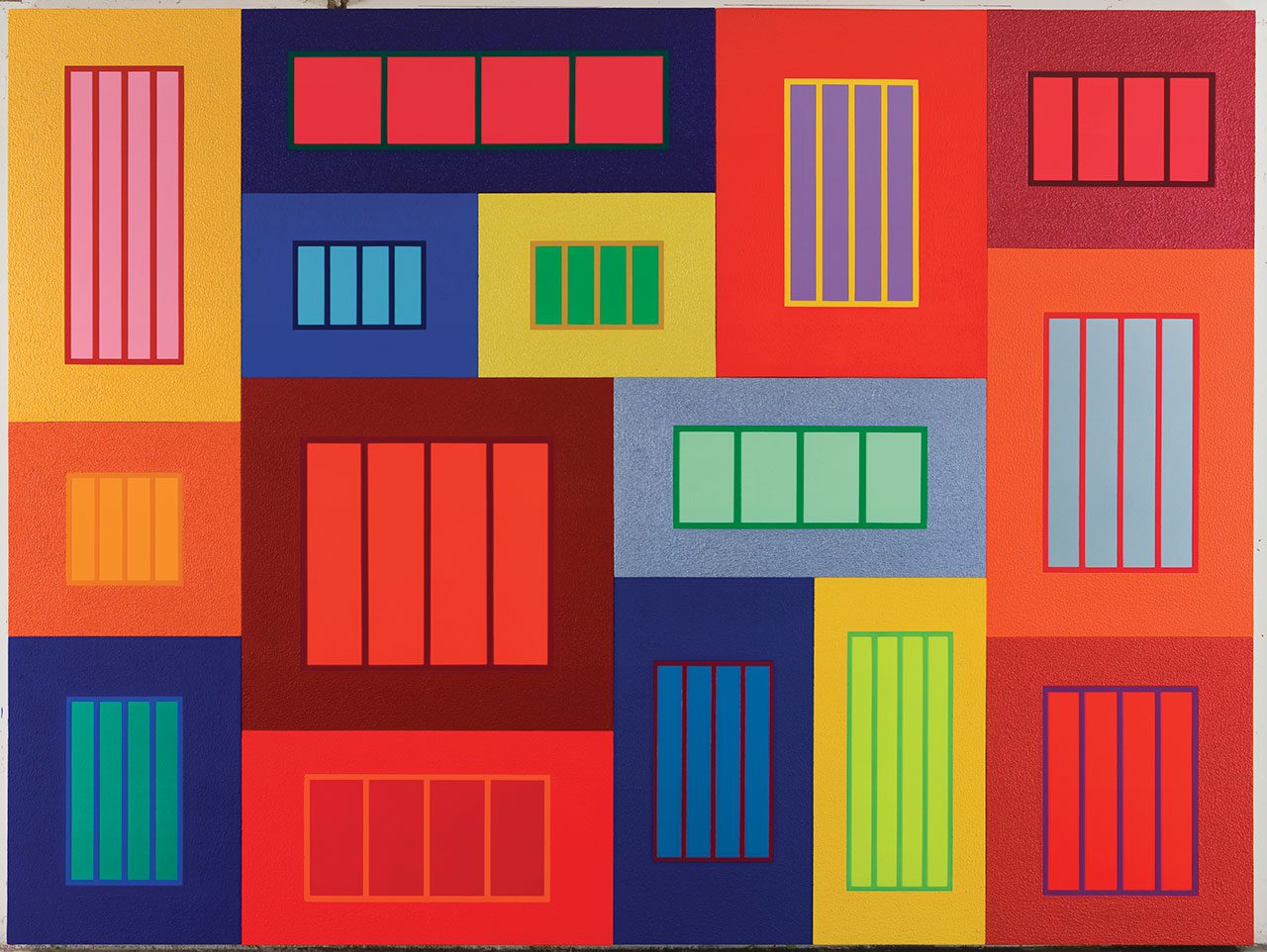PRESENTATION: Peter Halley-In Spain
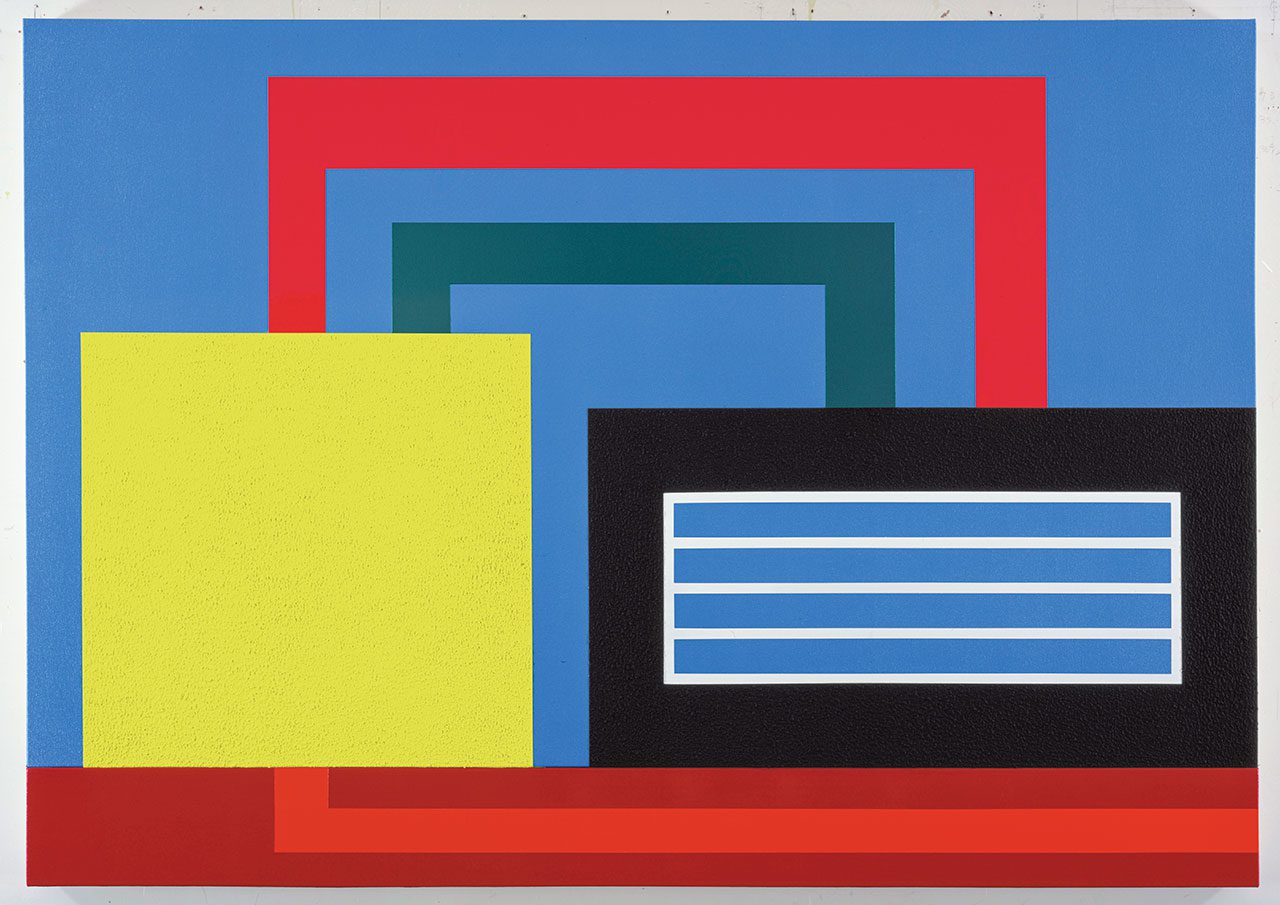 To a naïve viewer, what Peter Halley does is abstract painting: what else could these puzzles of squares and rectangles, parallel stripes and fluorescent colors be? But the artist denies it; he has denied it many times: his paintings are not abstractions, but rather diagrams of social reality. They can evoke objects from the world around us, such as prisons, blocks of flats, printed circuit boards, flow charts and they can suggest the structure of society.
To a naïve viewer, what Peter Halley does is abstract painting: what else could these puzzles of squares and rectangles, parallel stripes and fluorescent colors be? But the artist denies it; he has denied it many times: his paintings are not abstractions, but rather diagrams of social reality. They can evoke objects from the world around us, such as prisons, blocks of flats, printed circuit boards, flow charts and they can suggest the structure of society.
By Dimitris Lempesis
Photo: Museo Nacional Thyssen-Bornemisza Archive
From the 1980s, Peter Halley’s painting foresaw the digital society we live in today, with individuals isolated in their cubicles and totally interconnected at the same time: “a system of cells interlinked within cells interlinked within cells interlinked…”, as described in the Nabokov quotation that was used as the leitmotif for “Blade Runner 2049”. In short, one could say that Peter Halley’s great invention is meta-abstraction: a pictorial metalanguage that speaks of abstract painting and its meanings, establishing correspondences between the order of the paintings and the order of the world outside the paintings. Abstract painting has become ‘realistic’ because reality has become abstract. “Peter Halley in Spain” is the first retrospective devoted to Halley in Spain since the one organized by the Museo Nacional Centro de Arte Reina Sofía in 1992, in this case encompassing the artist’s entire career from 1985 to 2024. The selection of twenty paintings from public and private Spanish collections has been made by the artist himself, who has also designed the installation. Peter Halley’s appearance on the art scene at the beginning of the 1980s signaled a departure from the tradition of 20th-century abstract-geometric art – dominated until then by idealist and formalist concepts – towards new social concerns. In contrast to the pioneers of abstraction, for whom geometry embodied an ideal rationality endowed with utopian value, Halley’s painting and his critical and theoretical essays reinterpret geometry as a means of social confinement and control that is filled with dystopian overtones. The square, an object of quasi-religious worship from Malevich to Josef Albers, is transformed with critical humor into the painter’s icons of prisons, cells and conduits. In his compositions, reminiscent of microchips and flow charts, Halley anticipates our digital-age society, simultaneously characterized by systematic isolation and total interconnectedness. Finally, the artist’s use of a palette of fluorescent Day-Glo colors, evoking the energy of electronic screens, has distinguished Halley as one of the boldest and most experimental colorists of our time. Beginning in the 1990’s, Peter Halley has worked outside the international network of mega- galleries, collaborating with gallerists in different countries with whom he has established long- standing relationships of trust. The exhibition highlights the exceptional welcome that his work has received in Spain for almost forty years, where he exhibited for the first time in 1986, participating in “Art and its double: a New York perspective”, a group exhibition that presented the contemporary art scene in New York at the Fundación Caja de Pensiones in Madrid. Soon after that date, in 1992, the Museo Nacional Centro de Arte Reina Sofía presented a retrospective which had previously been seen in other European museums. It was then that Peter Halley also began to exhibit with galleries in Spain, including Galería Senda in Barcelona, and a few years later with Javier López in Madrid. The exhibition presents twenty large-format works spanning Peter Halley’s entire career, from 1985 to 2024, which offer a clear vision of his artistic evolution. “Prison” (1985) and “Skin Trade” (1994) are simple monochrome compositions close to minimalism, while “Edutainment” and “Blackout” (both 2005) and “Gravity” (2006) reveal more dynamism and complexity, achieved through the repetition of rotated or flipped forms, the superimposition of planes and an increase in the number of colors. Halley subsequently continued to focus on the ideas behind his first geometrical works, now with brighter, lighter and less intense colors than in previous decades, or multiplying the forms, as in “Half Magic” (2018), “Clemency” (2019) and “The High Note” (2020), which features three prisons rather than one.
Photo: Peter Halley, Edutainment, 2005, Acrylic, fluorescent acrylic, and, Roll‐a‐Tex on canvas. 165 × 234 cm, Private collection, Courtesy Museo Nacional Thyssen-Bornemisza
Info: Curator: Guillermo Solana, Museo Nacional Thyssen-Bornemisza, Paseo del Prado 8, Madrid, Spain, Duration: 19/10/2024-19/1/2025, Days & Hours: Mon 12:00-16:00, Tue-Sun 10:00-19:00, www.museothyssen.org/
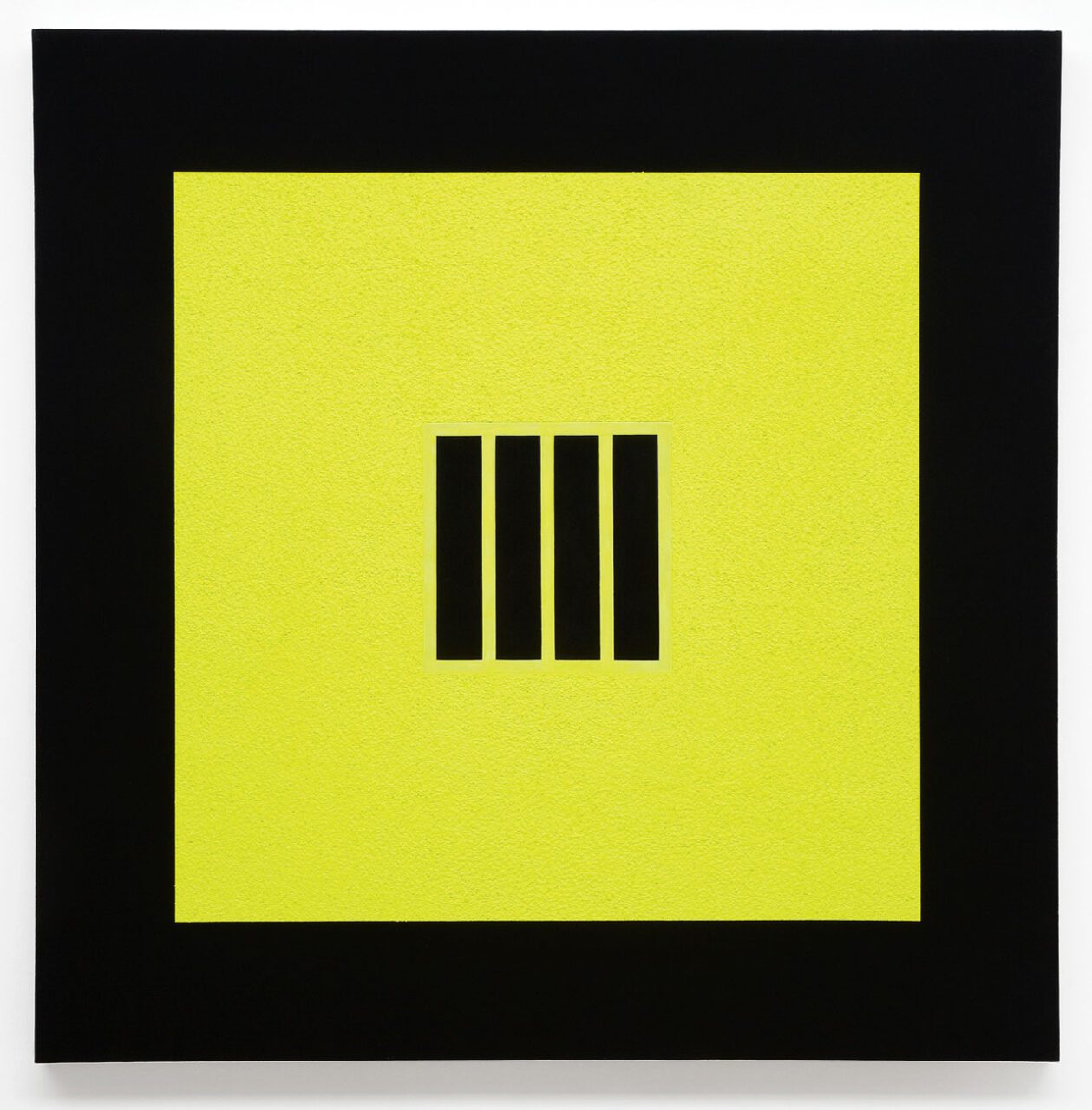
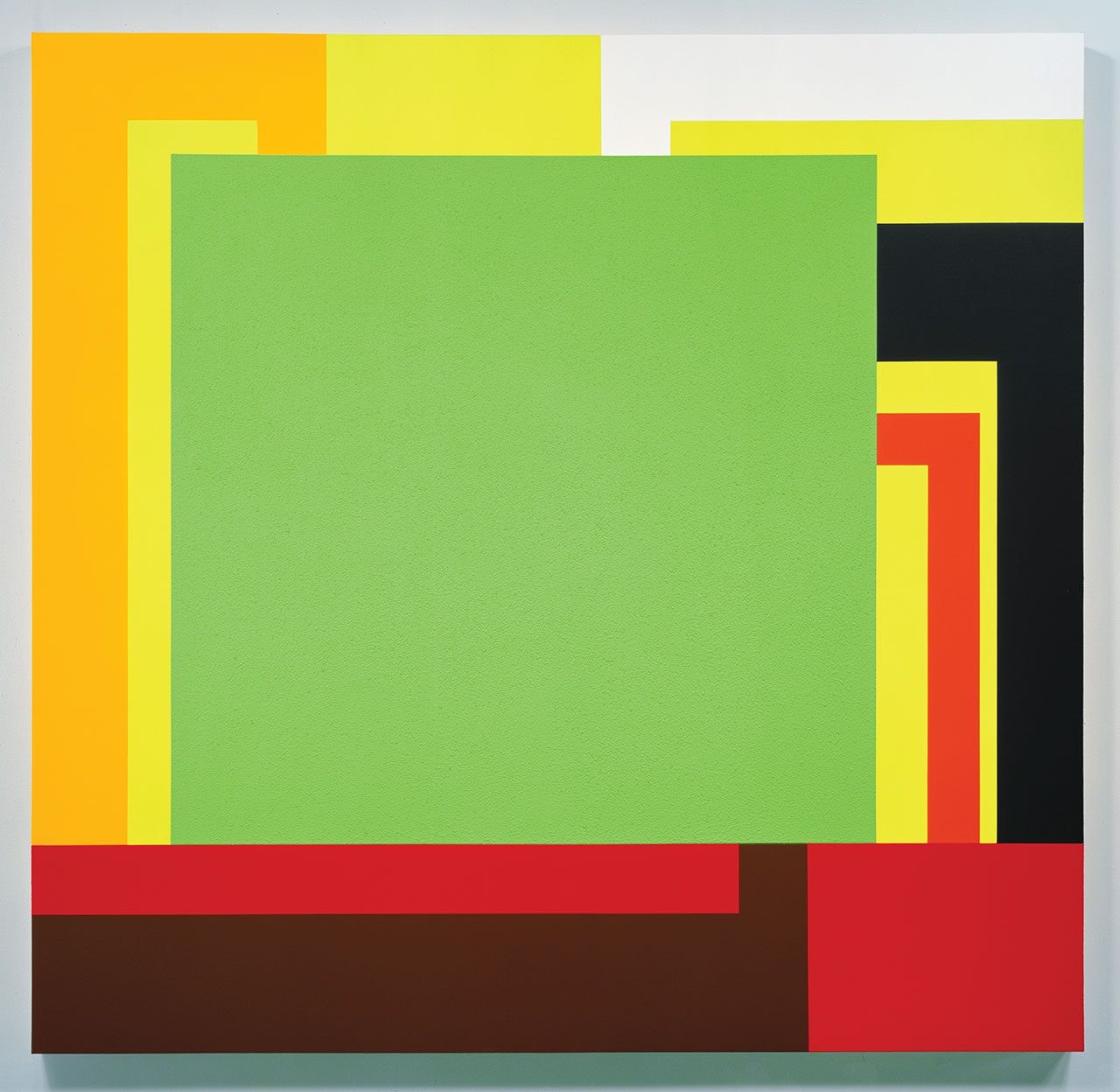
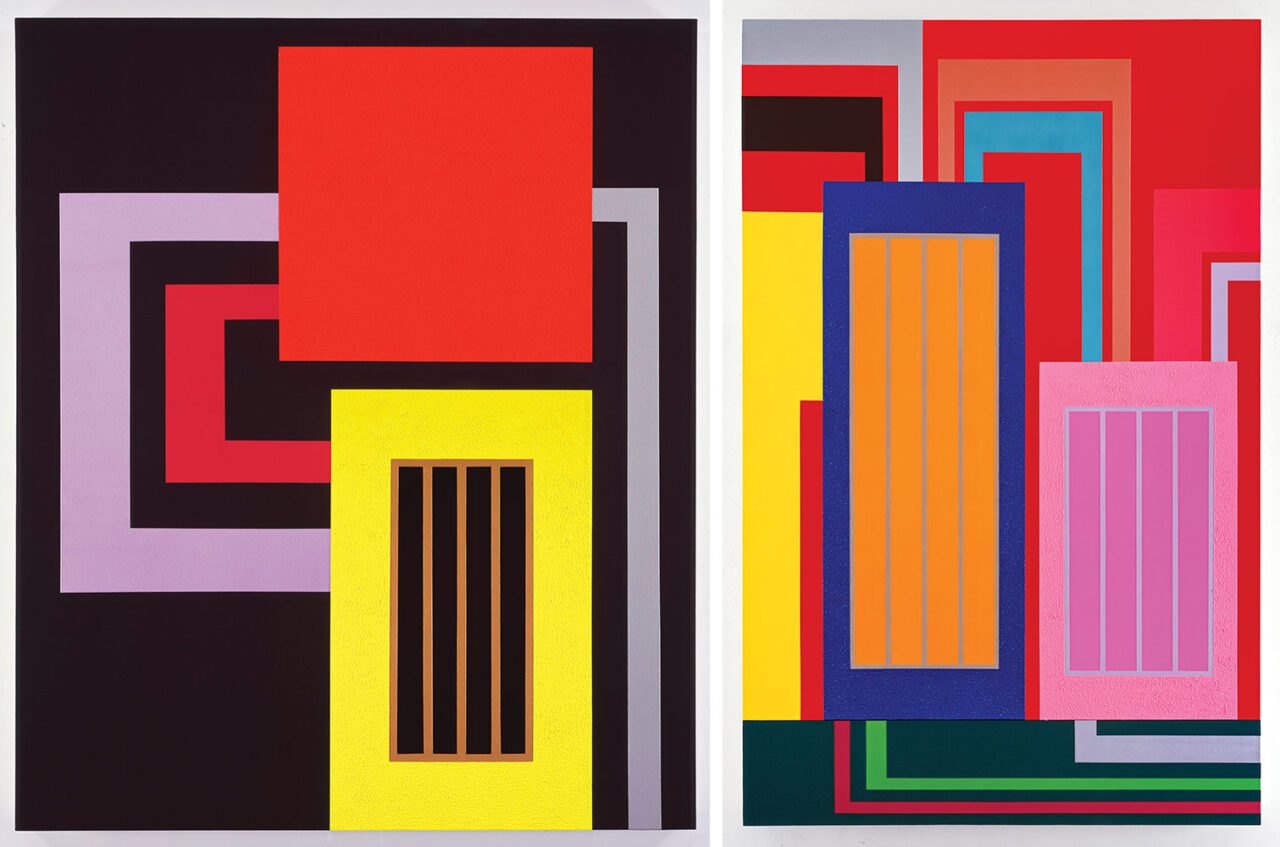
Right: Peter Halley,The World Is Not Enough.1999, Acrylic, fluorescent, metallic and pearlescent acrylic, and Roll‐a‐Tex on canvas, 262 × 168 cm. Private collection, Courtesy Museo Nacional Thyssen-Bornemisza
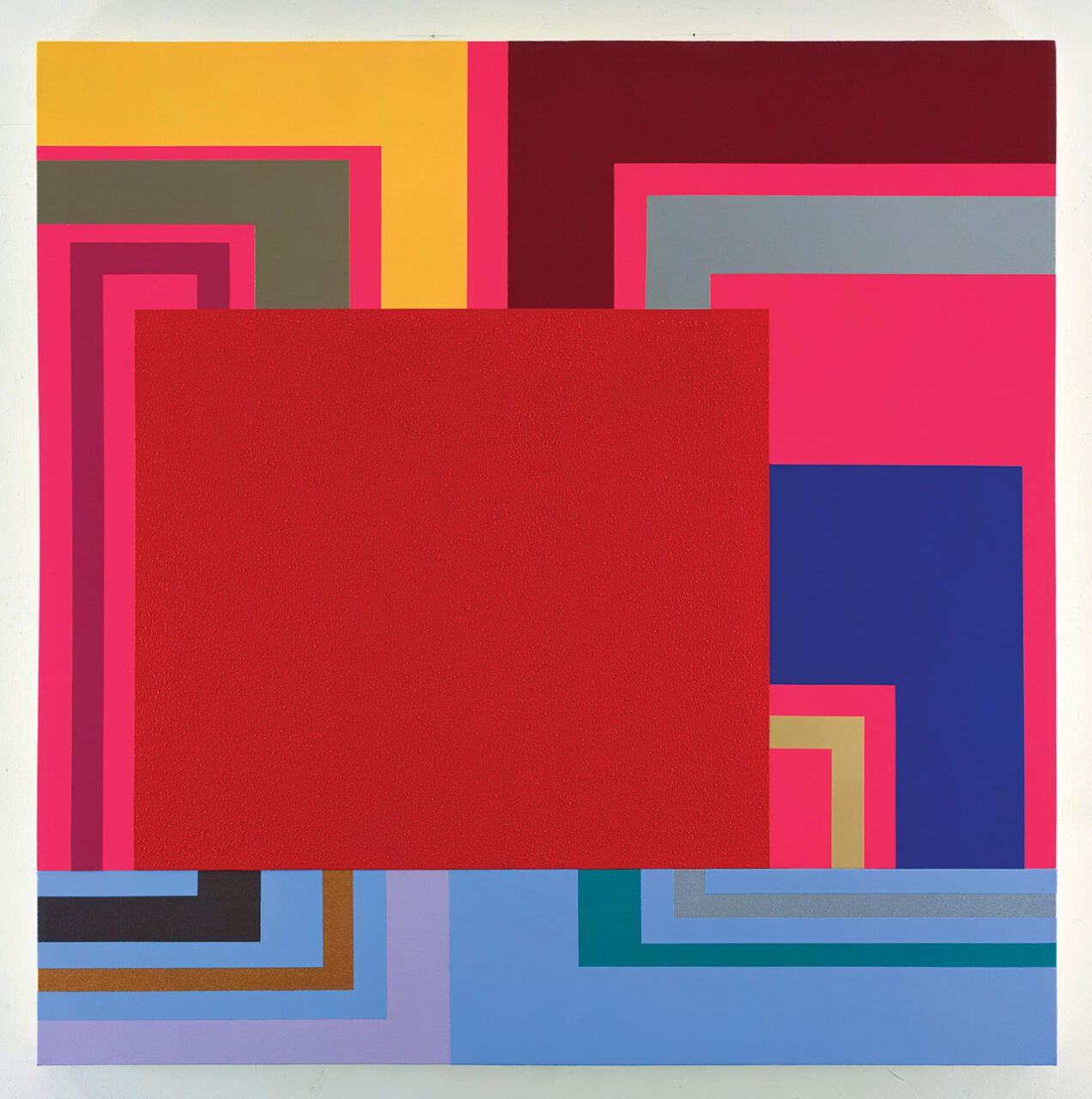
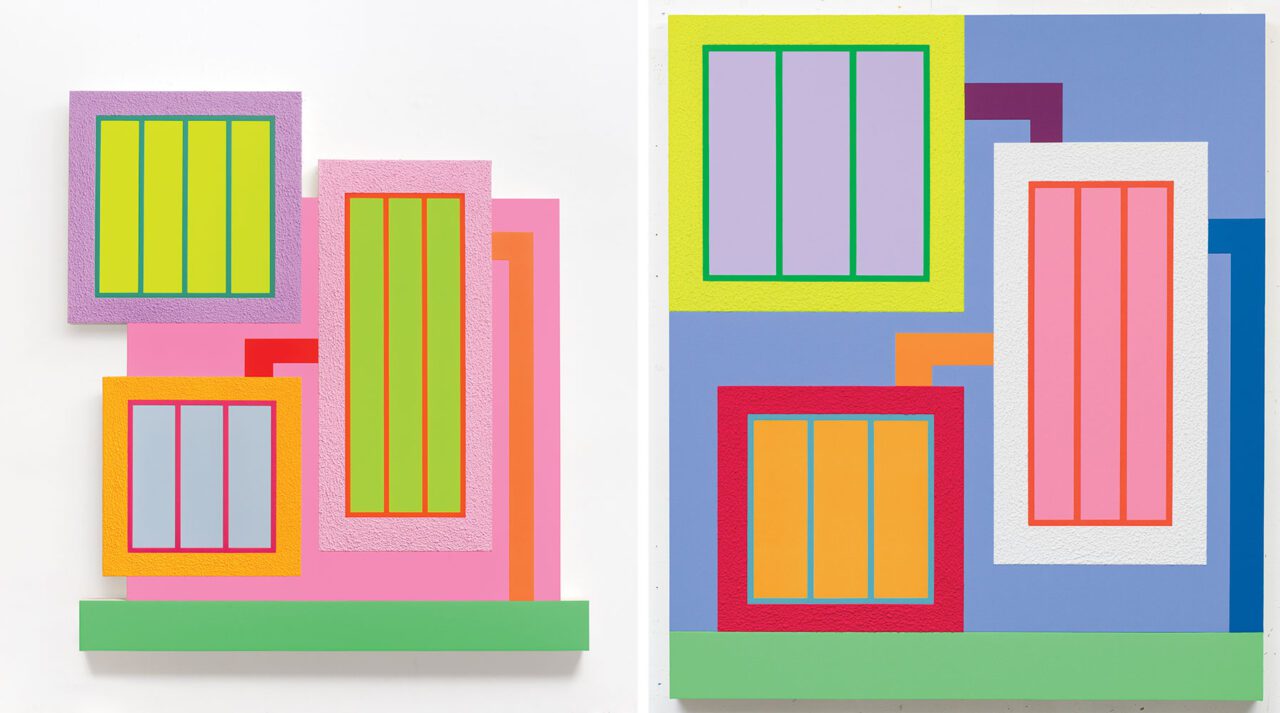
Right: Peter Halley, Half Magic, 2018, Acrylic, fluorescent acrylic, and Roll‐a‐ Tex on canvas, 204 × 178 cm. Angelo y María Fernanda Mazzarella Collection, Courtesy Museo Nacional Thyssen-Bornemisza
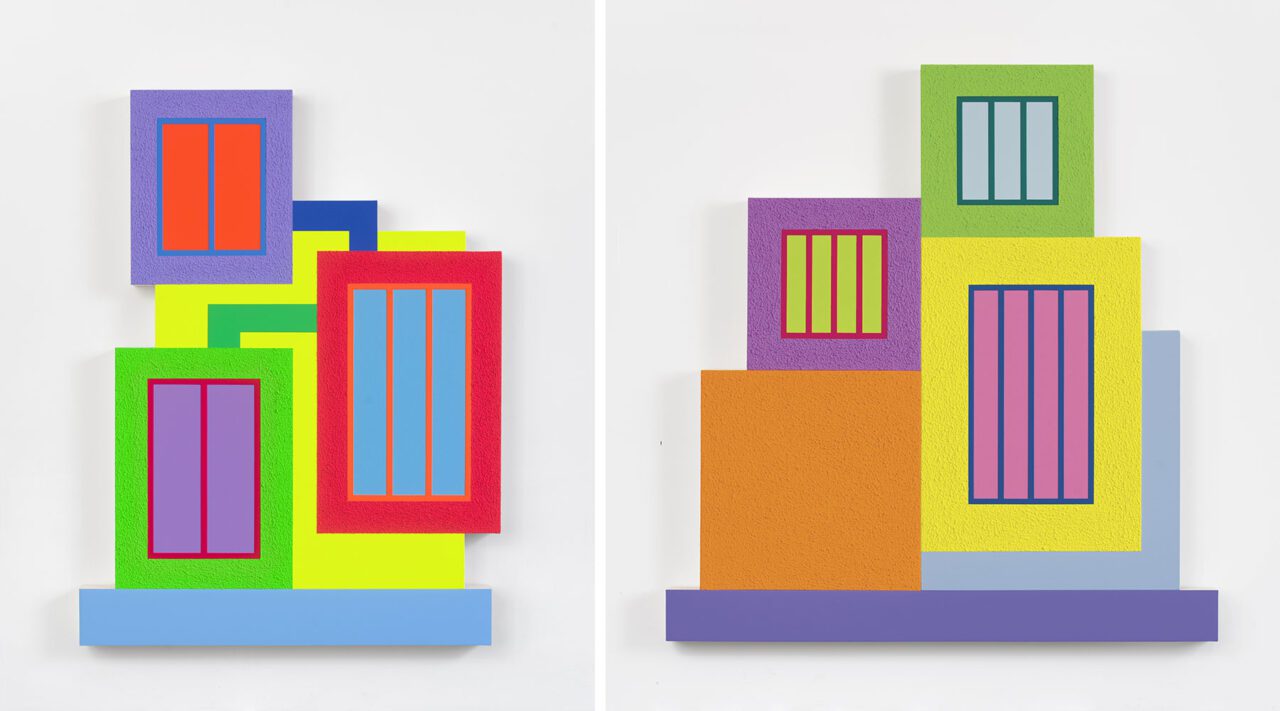
Right: Peter Halley, The Wrong Place, 2022, Acrylic, fluorescent acrylic, and Roll‐a‐Tex on canvas, 187 × 179 cm. Art Deco Gallery Collection, Courtesy Museo Nacional Thyssen-Bornemisza
